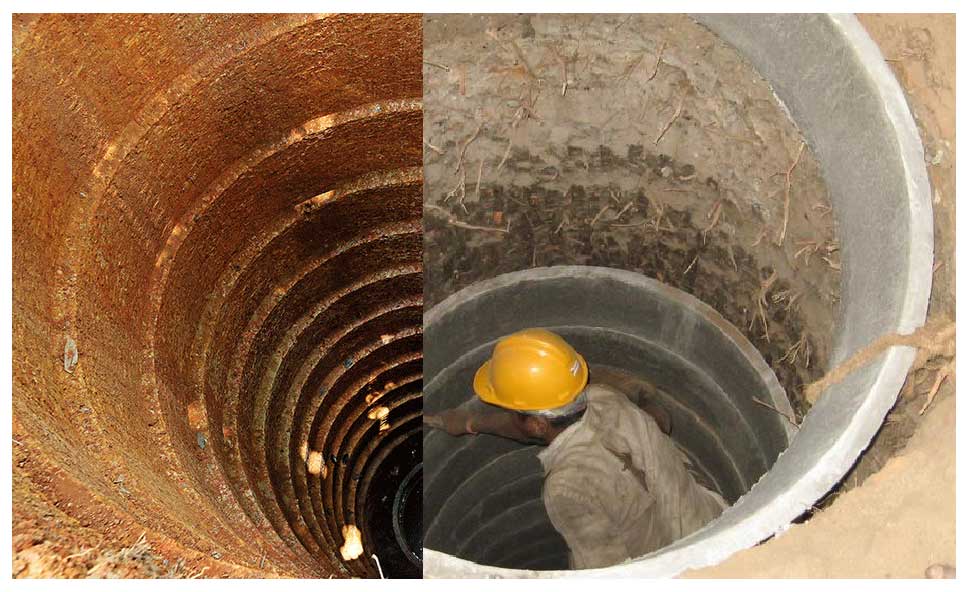Digging a well in the field can be a great way to access groundwater for irrigation, livestock watering, or other agricultural purposes. However, it’s important to take certain precautions before, during, and after the well-digging process to ensure that the well is safe, effective, and sustainable.

Before digging a well, it’s important to research local regulations, obtain any necessary permits, and consult with a hydrogeologist or other groundwater expert. During the digging process, it’s important to monitor the depth, diameter, and quality of the well, as well as the type of soil and rock being excavated. After the well is dug, it’s important to properly cap and seal the well, test the water quality, and maintain the well over time to ensure that it remains a reliable source of groundwater for years to come.
Digging a Well Stage wise Process:
Before Digging a Well: Factors to Consider During the Digging Process: What to Keep in Mind After Digging a Well: Maintenance and Safety
Before Digging a Well: Factors to Consider
Digging a well on your property can provide a reliable source of water, but there are several factors to consider before starting the process. These include:
- Location: Choose a location that is far from septic tanks, sewage systems, and other sources of contamination.
- Water availability: Determine if there is an adequate amount of water available in the location you have selected.
- Permit: Check with your local government for any permits or regulations that may apply to digging a well.
- Depth: Determine the depth of the well you need, depending on your water needs and the geology of the area.
- Budget: Consider the cost of digging a well, which may vary depending on factors such as the location, depth, and type of well.
During the Digging Process: What to Keep in Mind
Digging a well can be a dangerous and challenging process, so it’s important to take certain precautions to ensure safety and success. Here are some things to consider:
- Hire a Professional: It’s important to hire a professional to dig the well to ensure the process is done safely and correctly.
- Proper Equipment: Ensure that the equipment being used is appropriate for the job and is in good working condition.
- Safety Precautions: Take all necessary safety precautions to protect yourself and others during the digging process.
- Monitor Progress: Monitor the progress of the well digging to ensure that it is being done correctly and effectively.
After Digging a Well: Maintenance and Safety
Once the well has been dug, it’s important to properly maintain it to ensure that it remains a reliable source of water. Here are some things to consider:
- Sanitation: Ensure that the well is properly sanitized to prevent contamination and ensure safe drinking water.
- Testing: Test the water regularly to ensure that it is safe and free of contaminants.
- Maintenance: Regularly maintain the well to ensure that it continues to function properly and efficiently.
- Safety Measures: Take all necessary safety measures, such as installing a well cap and fencing around the well, to prevent accidents and protect the well from contamination.
Digging a well cost:-
The cost of digging a well can vary widely depending on several factors such as location, depth, type of well, and the cost of labor and equipment. On average, the cost of digging a well can range from a few thousand dollars to tens of thousands of dollars. For example, a shallow well may cost around $500 to $2,000, while a deep well may cost upwards of $5,000 or more. It’s important to research and obtain estimates from multiple well contractors to get an accurate idea of the cost of digging a well in your specific location and circumstances.
Here is a table summarizing the stages of the well digging process:-
|
Before Digging |
During Digging |
After Digging |
|
Choose a location away from contamination sources |
Hire a professional to dig the well |
Sanitize the well to prevent contamination |
|
Determine water availability |
Ensure appropriate equipment and safety precautions |
Test water regularly for contaminants |
|
Check for permits and regulations |
Monitor progress of well digging |
Regularly maintain the well |
|
Determine necessary well depth |
Take safety measures to protect the well and prevent accidents |
|
|
Consider budget |
Conclusion:
Digging a well on your property can be a great way to ensure a reliable source of water, but it’s important to carefully consider all factors before, during, and after the process. By taking proper precautions and following maintenance guidelines, you can ensure that your well remains a safe and efficient source of water for years to come.















